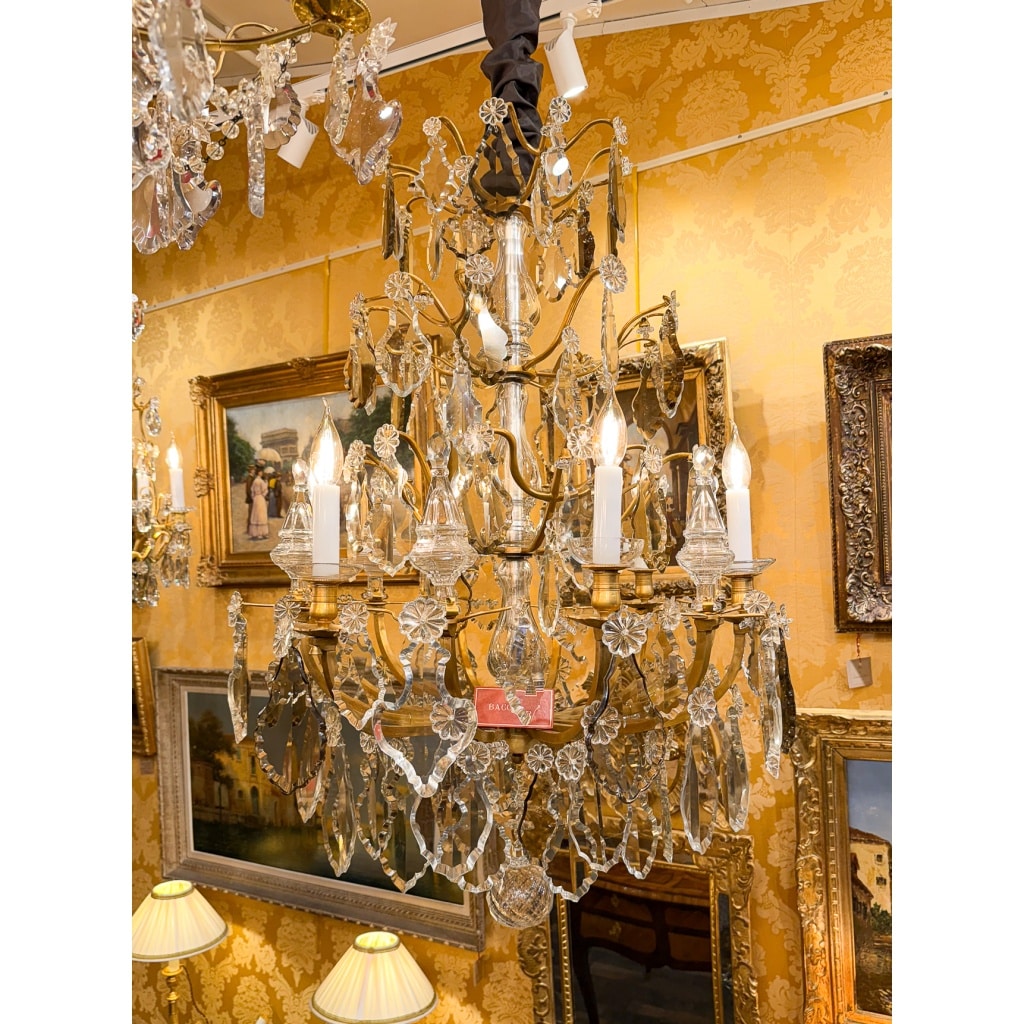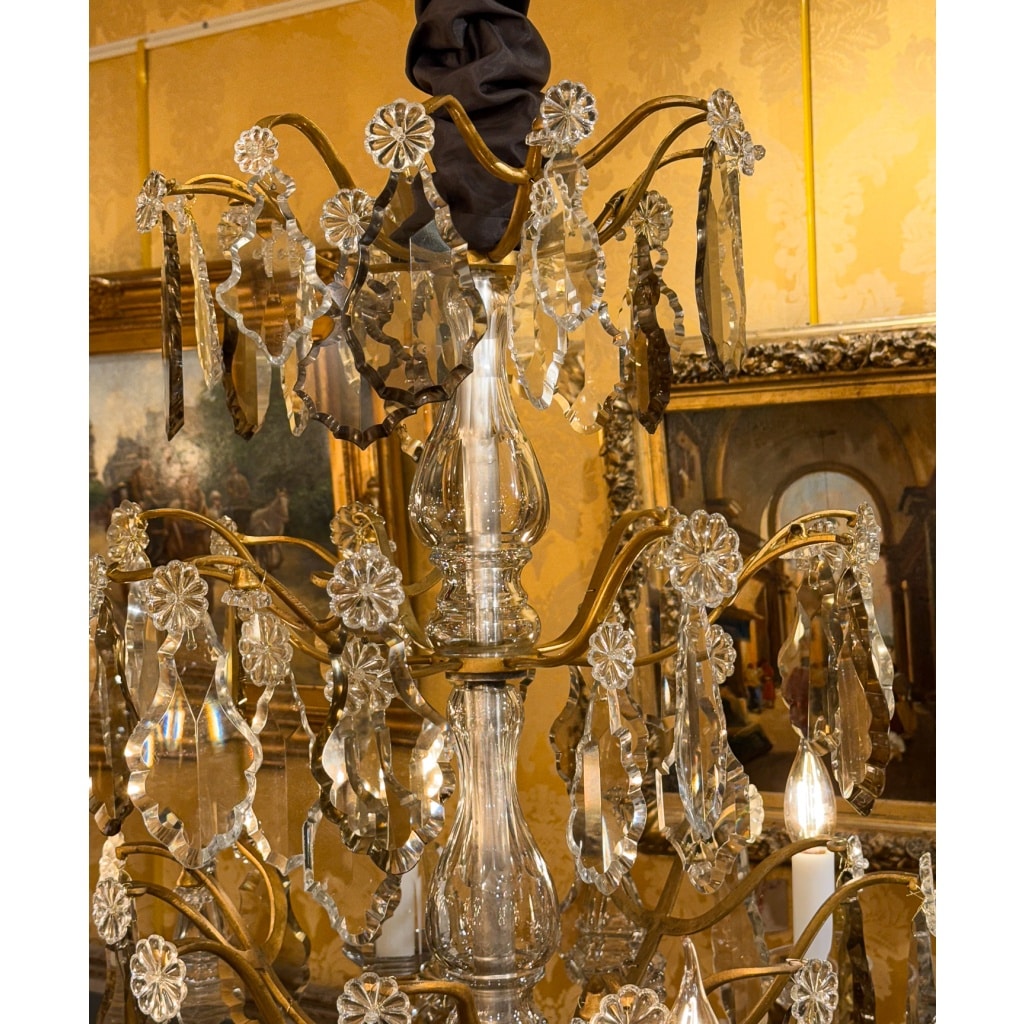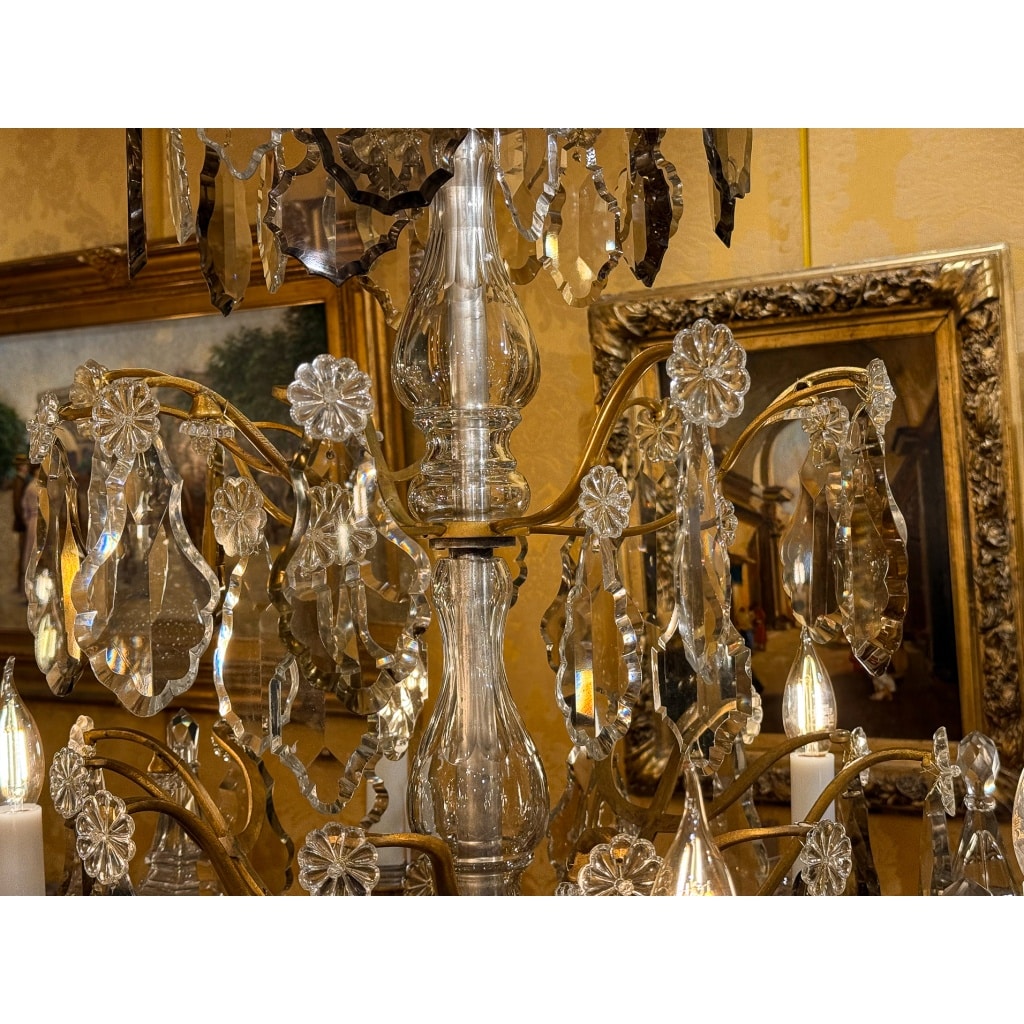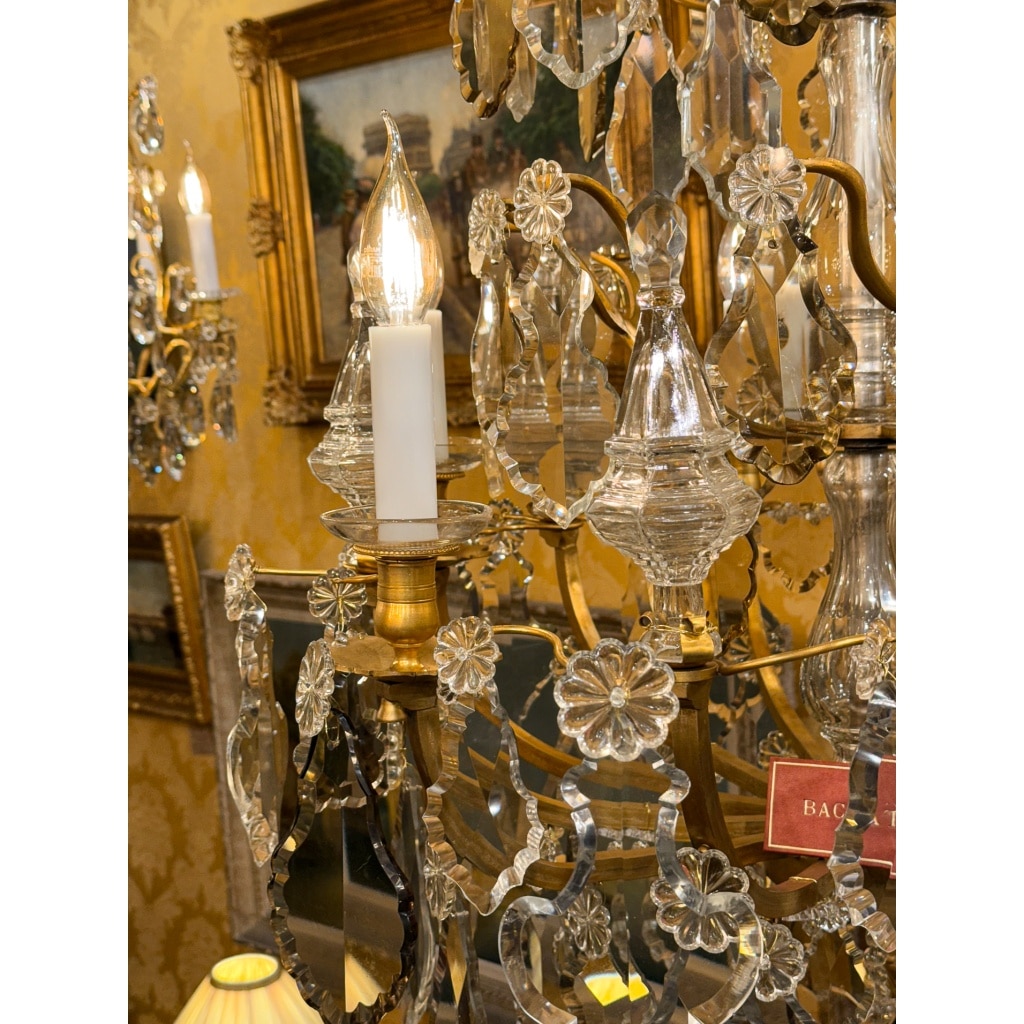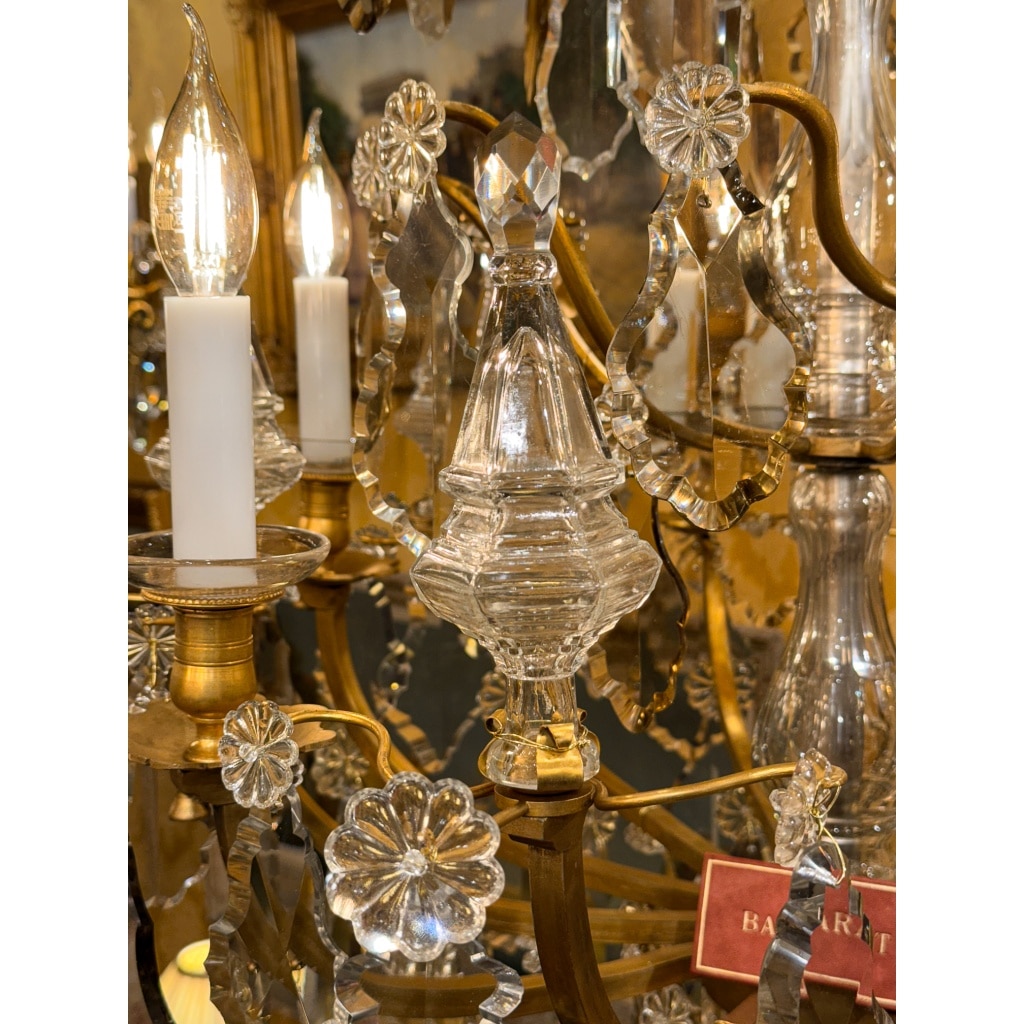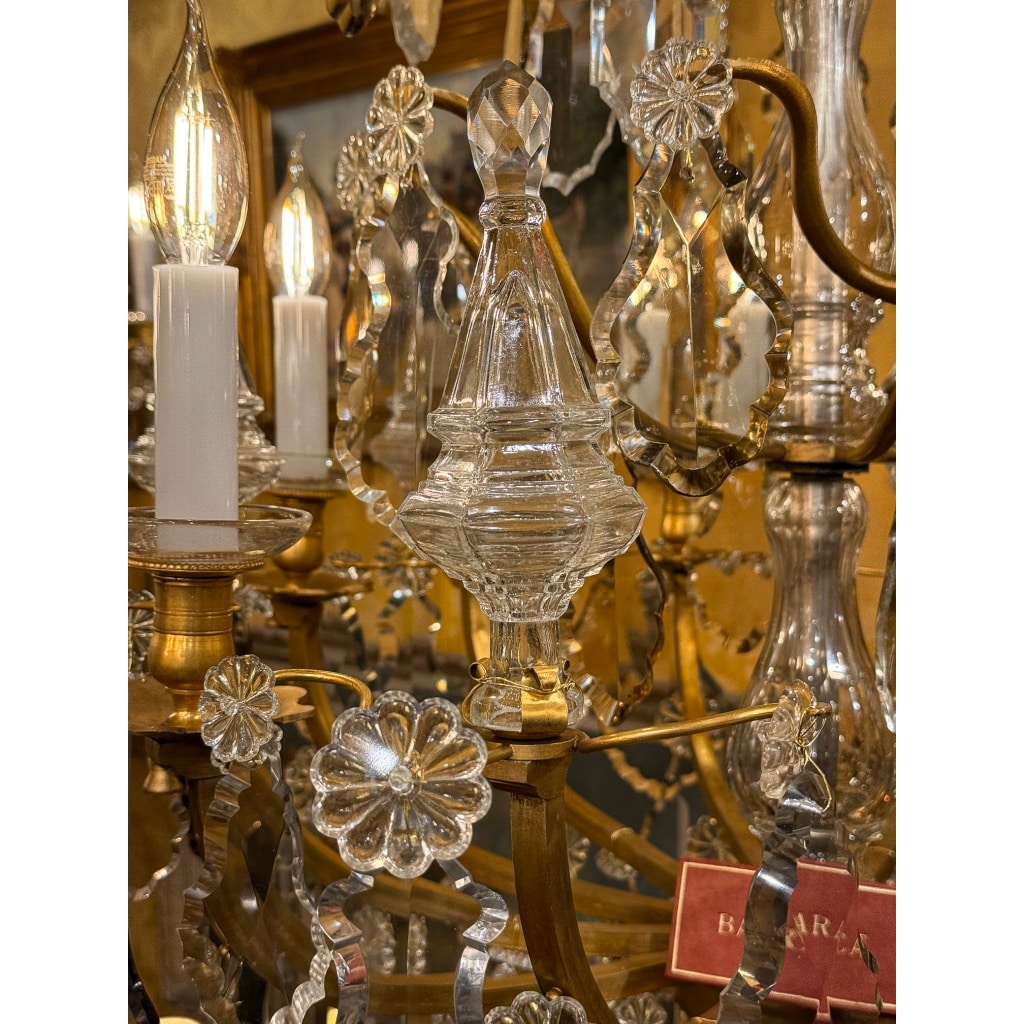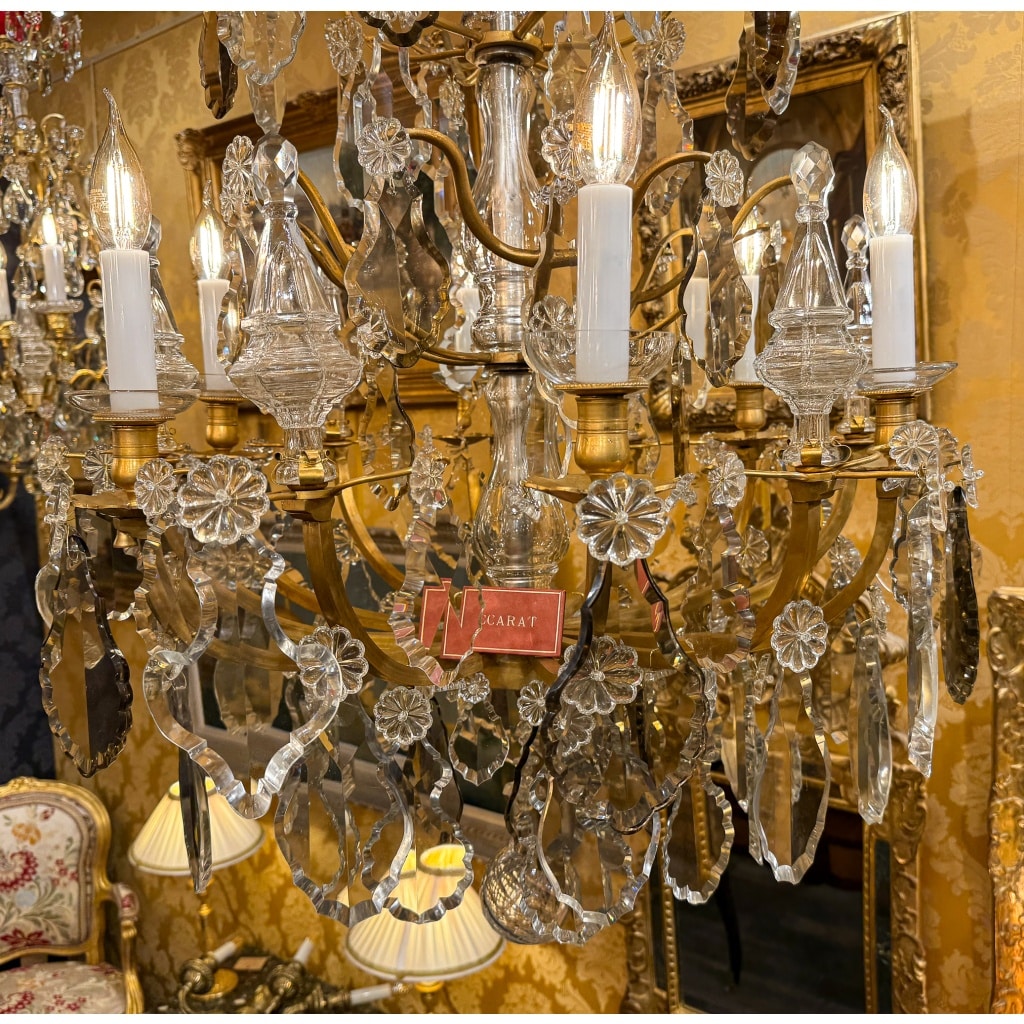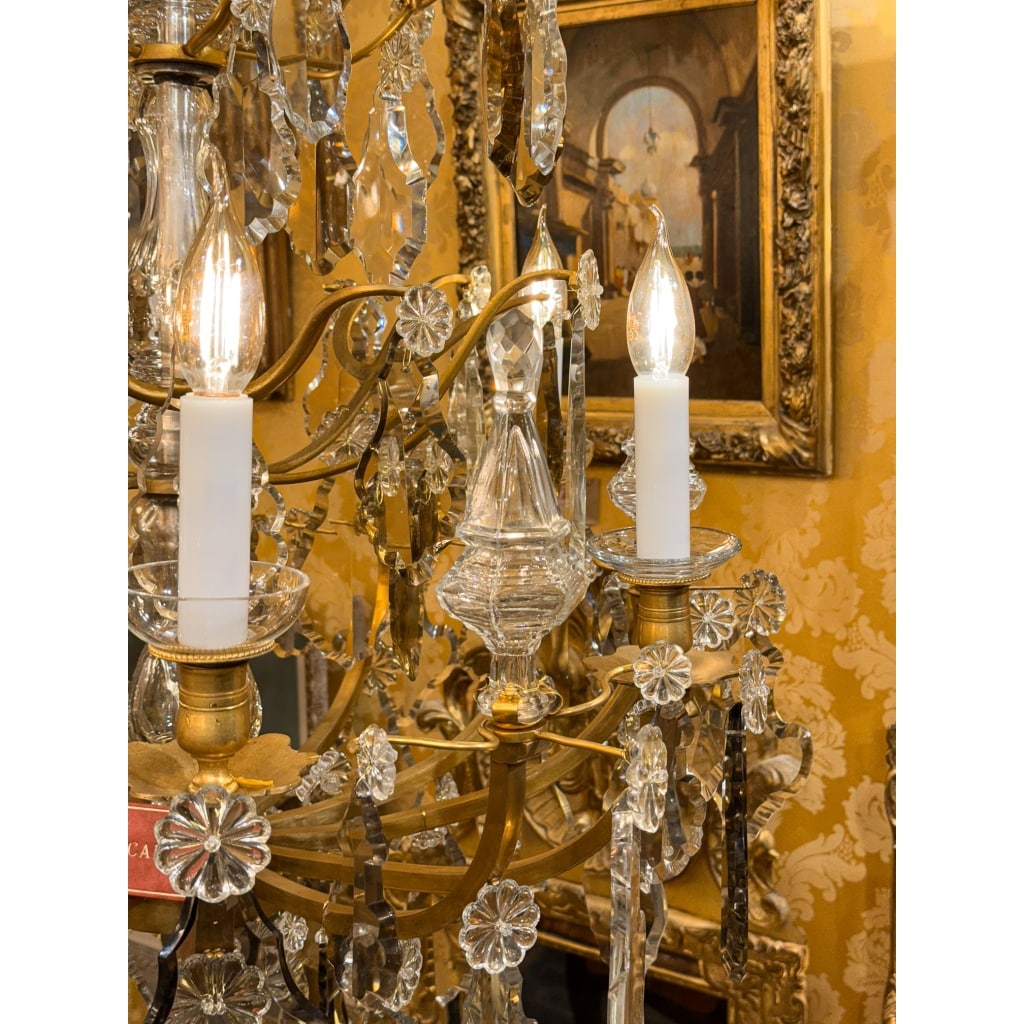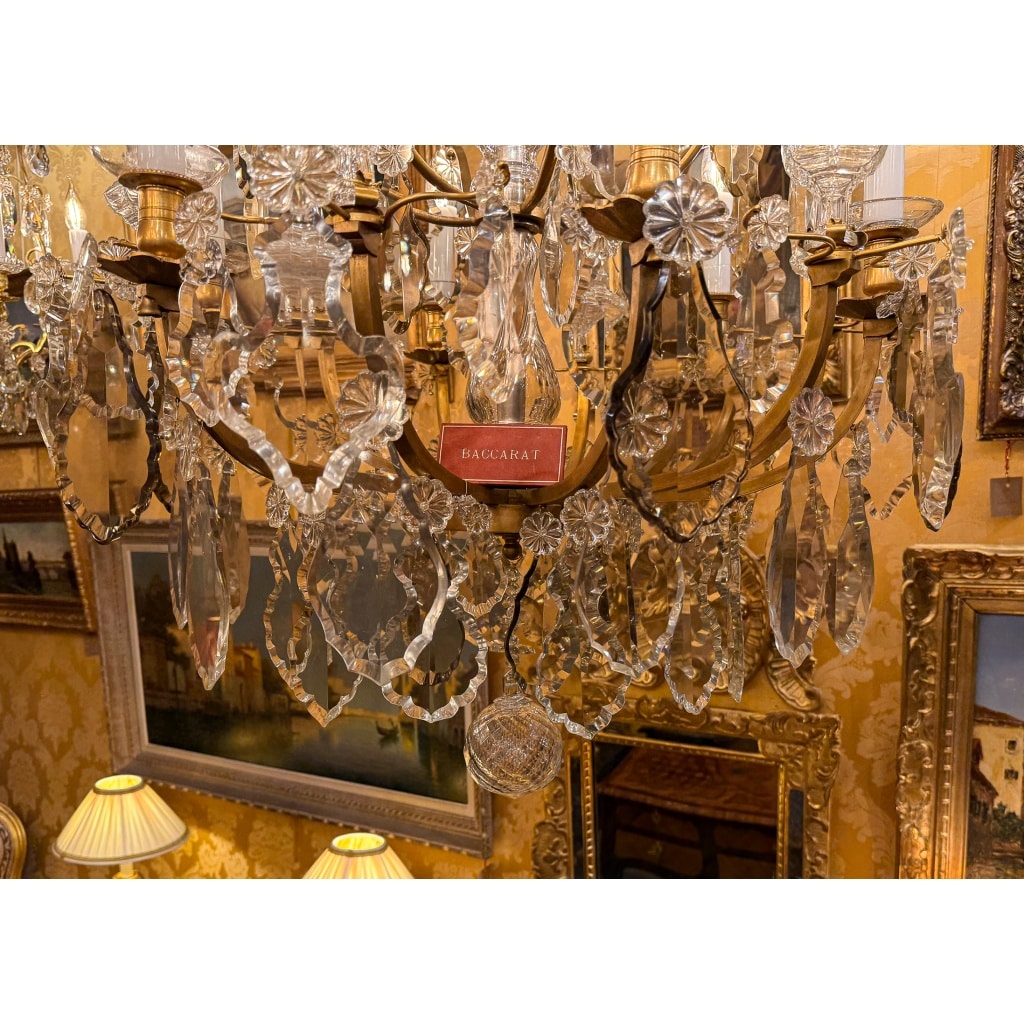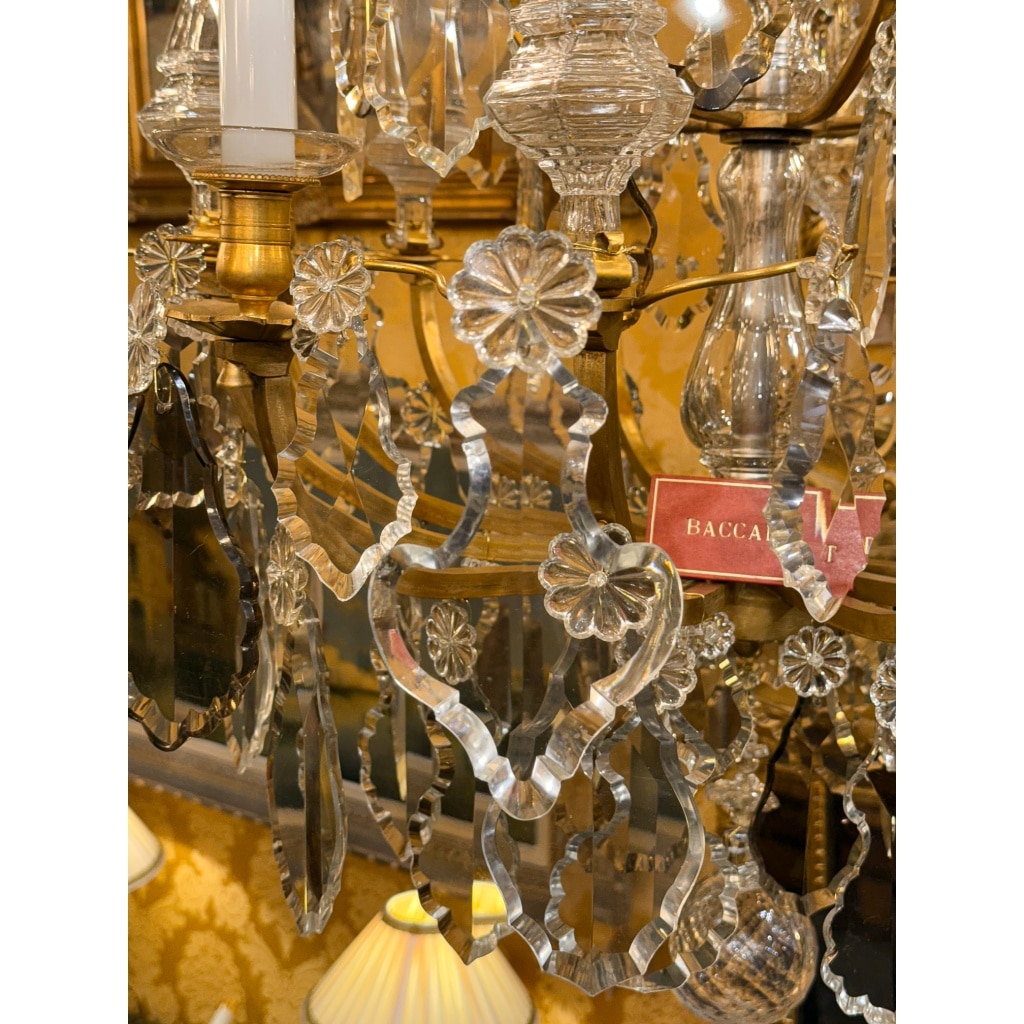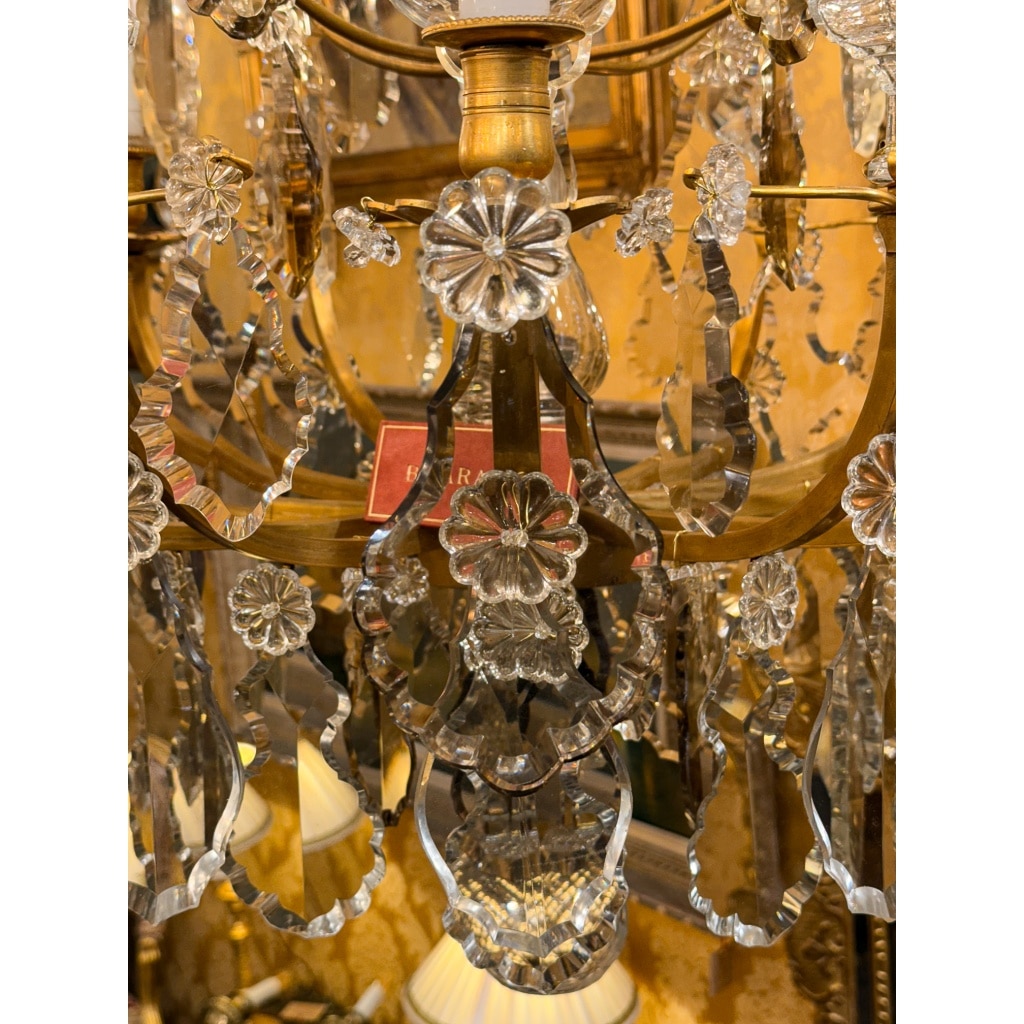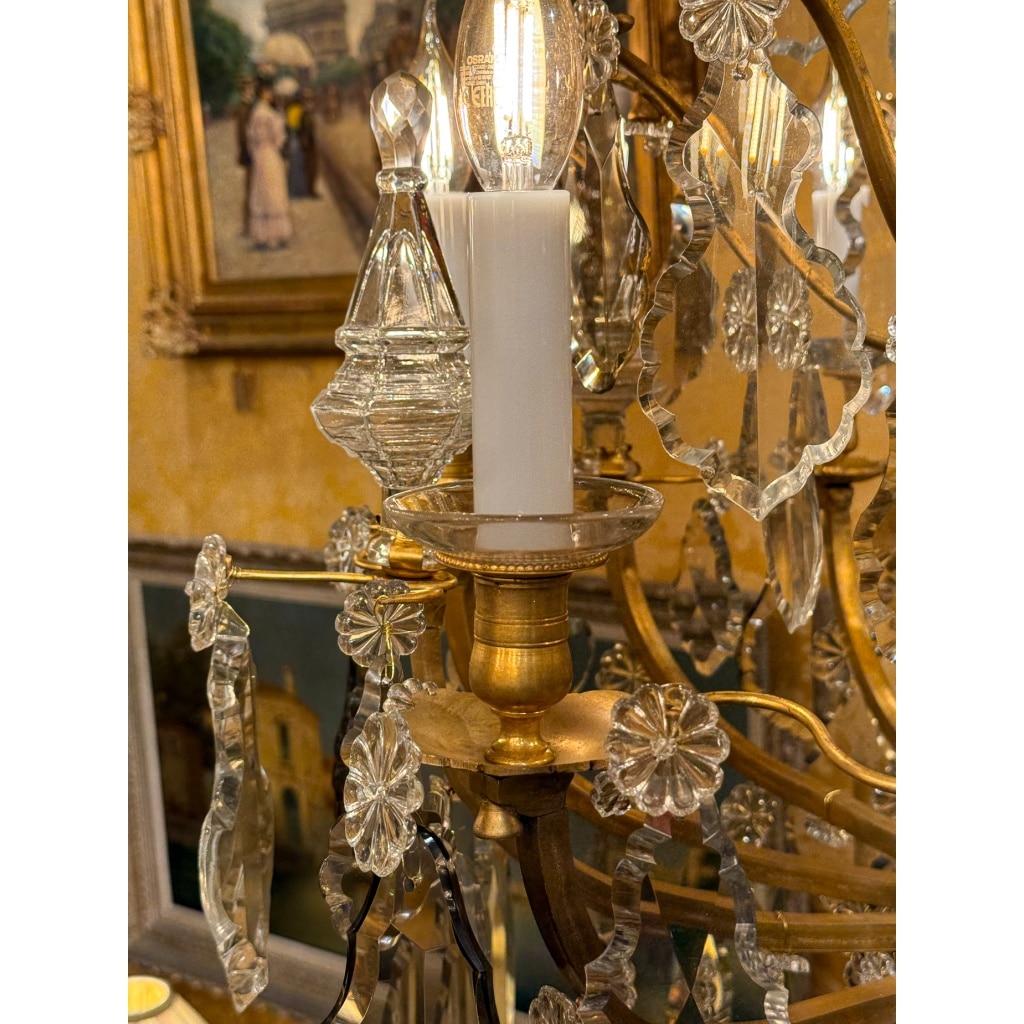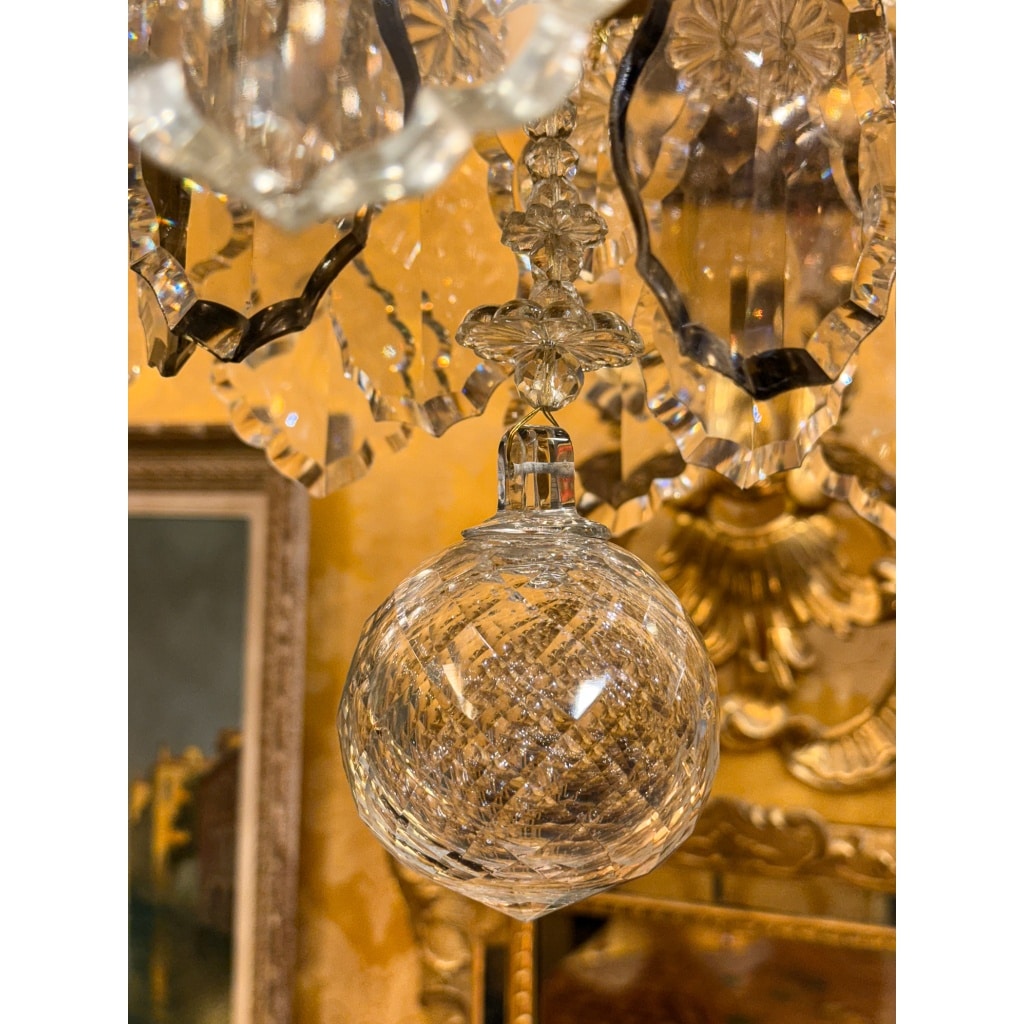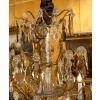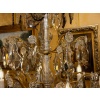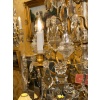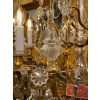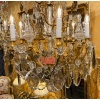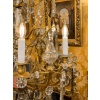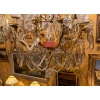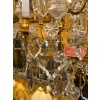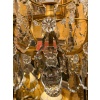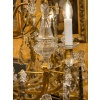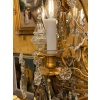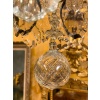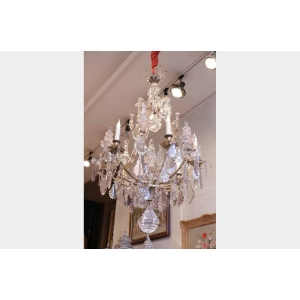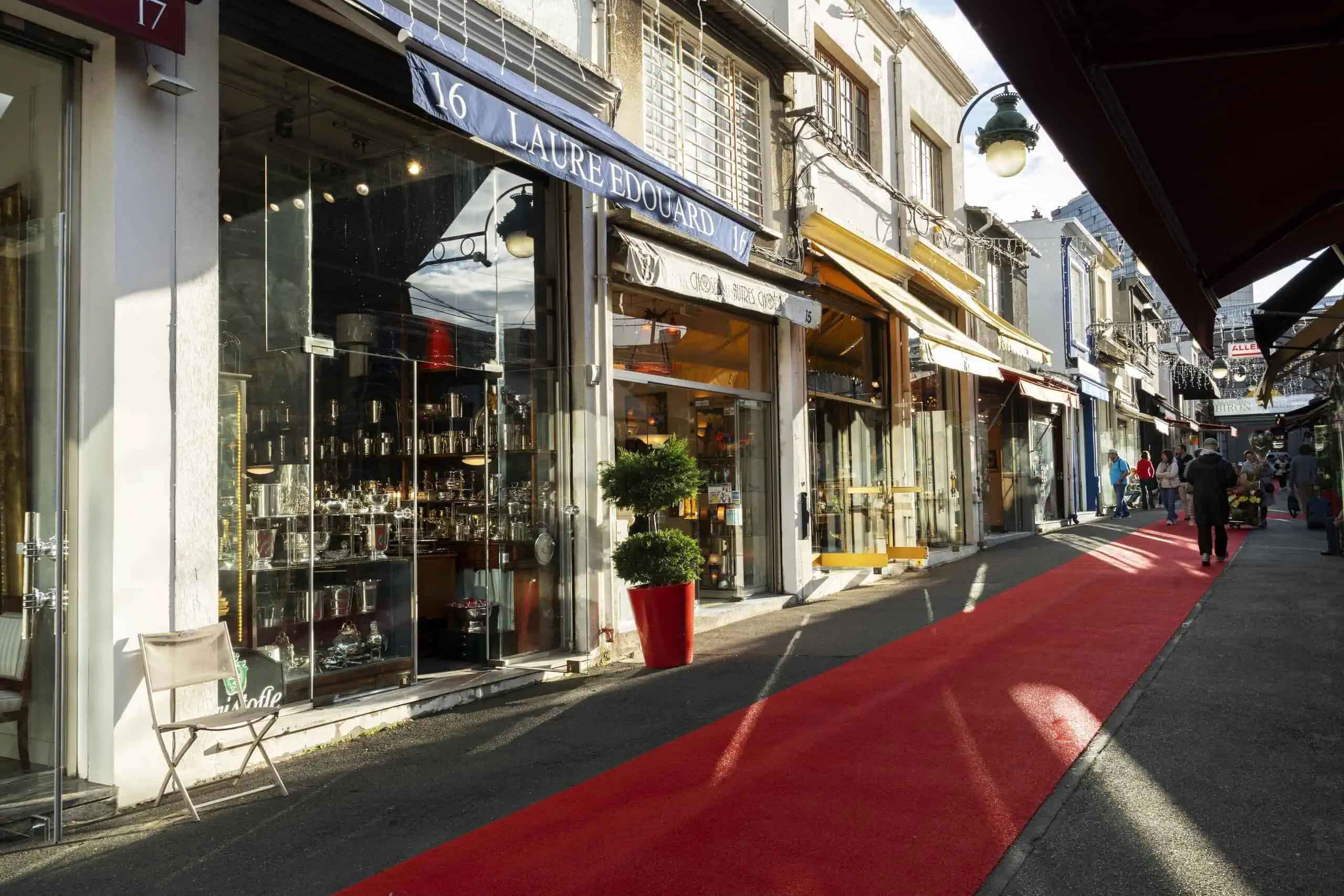Signé Baccarat Lustre de style Louis XV en bronze doré et décor de crystal taillé vers 1880-1890
Un élégant et décoratif lustre de forme tige de style Louis XV en bronze doré, éclairant par six bras de lumière et six grands poignards en cristal taillé en périphérie. Le lustre est composé de grandes plaquettes en cristal taillé de couleur blanche et fumée, au centre un enfilage de bouteilles en cristal taillé et se termine par une belle boule en cristal taillé.
Contexte historique : Magnifique lustre français de la fin du XIXème siècle, vers 1880-1890, signé Baccarat.
Dimensions :
Hauteur 115 cm
diamètre 80 cm.
En excellent état de conservation, ce lustre a été nettoyé et conserve sa dorure d’origine. Il est électrifié selon les normes européennes, avec possibilité d’adaptation aux standards américains sur demande.
Baccarat :
En 1764, le roi Louis XV accorde à Louis-Joseph de Montmorency-Laval, évêque de Metz, l’autorisation d’établir une verrerie dans le village de Baccarat en Lorraine.
En 1824, Ismaël Robinet, ouvrier verrier de Baccarat, invente une pompe à air pistonné qui facilite le soufflage du verre. L’année suivante, Baccarat développe la technique du pressé-moulé.
En 1855, Baccarat participe à la première Exposition universelle parisienne, avec notamment deux candélabres et un lustre de dimensions monumentales.
En 1860, le 29 octobre, Baccarat dépose sa marque de fabrique au tribunal de commerce de Paris : une carafe, un verre à pied et un gobelet inscrit dans un cercle. D’abord imprimée sur une étiquette en papier, l’estampille sera ensuite directement gravée sur la pièce.
Baccarat est un cristal d’une excellente qualité, il ne contient pas moins de 31,7% de plomb, sans aucun default, un haut niveau d’exigence, voici ce qui caractérise la manufacture. La Cristallerie de Baccarat traverse les générations tout en restant un symbole de l’art de vivre à la Française.
—
Signed Baccarat Louis XV Style Chandelier in Gilt Bronze and Cut Crystal, circa 1880-1890
Description: An elegant and decorative Louis XV style stem chandelier in gilt bronze, featuring six light arms and six large crystal daggers around the periphery. The chandelier is composed of large plaques of cut crystal in white and smoky colors. At its center, it has a string of cut crystal bottles and is topped with a beautiful cut crystal ball.
Historical Context: A magnificent French chandelier from the late 19th century, circa 1880-1890, signed Baccarat.
Dimensions:
Height: 45.3 inches
Diameter: 31.5 inches
Condition: In excellent original condition, this chandelier has been cleaned and retains its original gilding. It is electrified according to European standards, with the possibility of adaptation to American standards upon request.
About Baccarat:
In 1764, King Louis XV granted Louis-Joseph de Montmorency-Laval, Bishop of Metz, permission to establish a glassworks in the village of Baccarat in Lorraine.
In 1824, Ismaël Robinet, a glassworker at Baccarat, invented a piston air pump that facilitated glassblowing. The following year, Baccarat developed the pressed-molded technique.
In 1855, Baccarat participated in the first Parisian World’s Fair, showcasing two candelabras and a chandelier of monumental dimensions.
On October 29, 1860, Baccarat registered its trademark with the Paris Commercial Court: a decanter, a goblet, and a glass inscribed in a circle. Initially printed on a paper label, the stamp was later directly engraved on the piece.
Baccarat crystal is of excellent quality, containing no less than 31.7% lead, without any defects, reflecting a high level of craftsmanship. This is what characterizes the manufacturer. The Baccarat Crystal Works has traversed generations while remaining a symbol of the French art of living.

